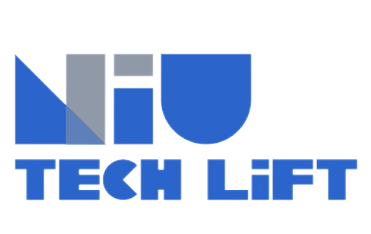
AI + Green Elevators: The Technological Revolution of Predictive Maintenance Reducing Energy Consumption by 30%
The energy consumption cost throughout an elevator's lifecycle far exceeds its initial purchase price. Traditional maintenance methods fail to capture equipment status in real-time, leading to energy waste. A factory deployed an AI predictive maintenance system for vacuum pump equipment, achieving 24/7 monitoring, saving ¥1.2 million in annual maintenance costs, and significantly reducing unplanned downtime. Its energy-saving mechanism relies on three technical layers:
Real-time Monitoring Layer
Vibration-temperature integrated sensors collect over 20,000 data points per second, with built-in AI algorithms preprocessing the data.
Edge Computing Layer
Edge computing gateways analyze operating conditions instantly, reducing cloud computing burdens.
Cloud Decision-making Layer
AI models integrate equipment mechanisms with mathematical models, self-iterating fault diagnosis logic.
A pilot project validated the universality of this technical approach. Buildings equipped with an AI big data smart energy management platform reduced comprehensive energy consumption by nearly 30%. A 30-story office building saved 1.5 million kWh annually and reduced carbon emissions by 870 tons.
Weather Forecasting Technology and Elevator Fault Prediction
Extreme weather is a hidden accelerator of elevator failures. A meteorological prediction model surpasses traditional weather forecasts in 97.2% of indicators, providing precise environmental 预判 (predictions) for elevator maintenance. Technological integration creates new possibilities:
- Medium-long-term Prediction: Adjust traction machine lubrication plans based on 15-day weather data.
- Extreme Weather Protection: Initiate fastener inspections 72 hours before a typhoon lands.
- Microclimate Adaptation: Customize machine room temperature control strategies using meteorological station data around the building.
- An elevator system in a skyscraper automatically adjusts dehumidification intensity based on humidity forecasts, reducing failure rates in humid environments by 40%.
Insurance Models Reshaping Maintenance Systems
A pioneering "pre-claim + safety assessment" insurance model provides an economic lever for predictive maintenance, establishing a risk-sharing mechanism: Insurance companies allocate maintenance reserves based on elevator health data, while maintenance teams replace high-risk components strategically. Its transformative value manifests in three aspects:
- Economic Dimension: Shifts post-facto compensation to pre-emptive prevention, reducing insurance claim rates.
- Technical Dimension: Drives maintenance from "time-based cycles" to "condition-based needs".
- Trust Dimension: Third-party assessments enhance safety transparency.
- A remote service system of an elevator enterprise accesses over 190,000 elevators, achieving remote fault alarms via real-time monitoring and improving maintenance response speed by 50%.
Upgradation Plans for Core Hardware Components
International buyers' demand for energy-saving components shows a trend of technical labeling, with components meeting specific certification standards becoming key procurement considerations:
- Intelligent Sensing Matrix: Three-axis vibration-temperature sensors using MEMS technology capture over 20,000 data points per second, complying with multinational safety certification standards.
- Energy-saving Power System: Permanent magnet synchronous gearless traction machines achieve over 70% comprehensive energy savings. Their energy feedback mechanism converts mechanical potential energy into electrical energy for grid return, while reluctance optimization design reduces iron and copper losses. These traction machines are compatible with small machine rooms and machine-room-less scenarios, suitable for high-rise residential and commercial complex projects.
Global Deployment Practices and Technical Implementation Paths
The elevator renovation of a Southeast Asian landmark project demonstrates complete technical integration:
- Data Foundation Construction: Deploy 36 sensors at key points, refreshing data every 6 seconds.
- Intelligent Hub Deployment: Edge computing gateways integrate weather interfaces.
- Energy-saving Hardware Upgradation: Replace traditional units with permanent magnet synchronous traction machines and install potential energy recovery devices.
- After renovation, energy consumption decreased by 31.7%, and fault downtime reduced by 45%. Regional adaptation highlights include:
- Middle East Desert Climate: Enhanced heat dissipation modules (temperature control accuracy ±0.5℃) and high-grade dustproof design.
- Nordic Extremely Cold Environments: Low-temperature start lubrication systems combined with bearing heating devices.
- Southeast Asian High-humidity Regions: Nano-moisture-proof coatings and corrosion sensor warnings.
Technical Value and Industry Impact
An elevator energy consumption intelligent analysis system validated in 287 projects reduced average energy consumption by 26.8%, and its dynamic scheduling algorithm minimized 32% inefficient operation. Industrial integration in an intelligent factory significantly decreased traction machine production costs and improved per capita efficiency. Independent algorithms have covered European and American markets through international patent layout, promoting their inclusion in industry energy efficiency standards.
